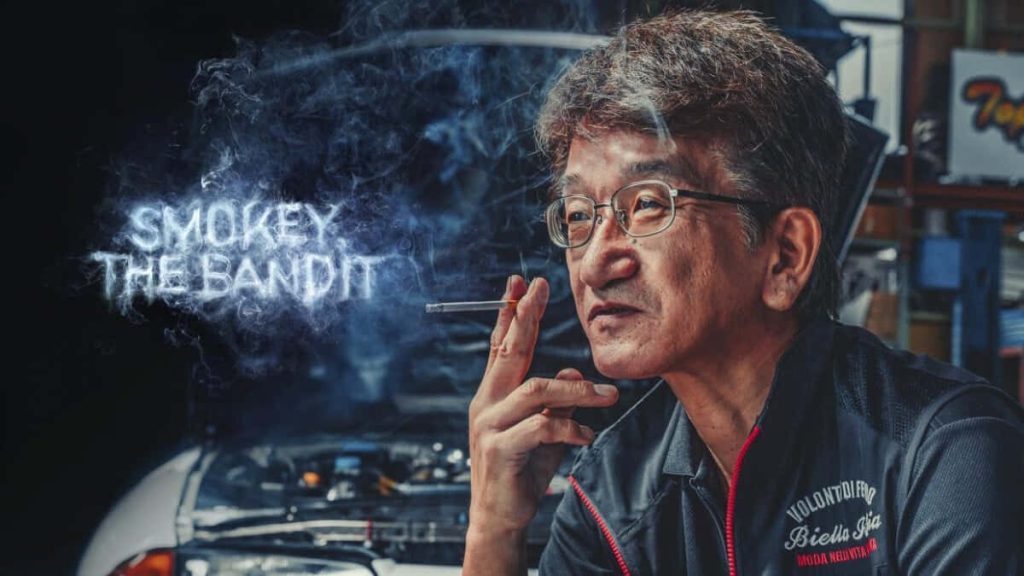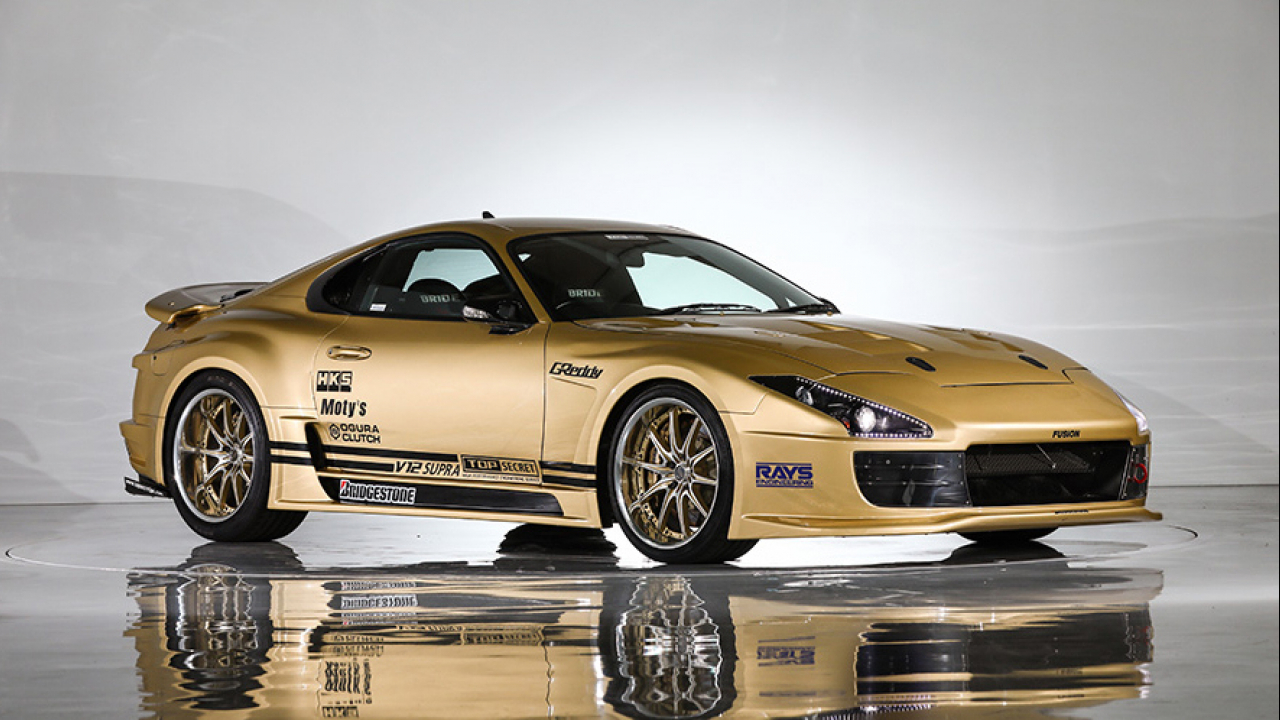In the world of high-performance cars, Smokey Nagata is a legendary figure who has made a name for himself by building some of the fastest and most powerful cars on the planet. Among his many achievements, he is best known for creating the fastest street-legal car in the world, which is an incredible feat. This article will explore the story behind Smokey Nagata’s incredible achievement and examine the factors that contributed to his success.
The Early Years of Smokey Nagata
The Birth of His Love for Cars
Kuzuhiko “Smokey” Nagata was born in 1964 and raised in Hokkaido. Living on farmland, he didn’t grow up seeing many cars, but from a young age, he was fascinated by machinery and its potential, mainly because his father was a fast driver. He began working on small engines at an early age and soon discovered that he had a real knack for modifying them. He also developed the same thirst for speed as his father as he watched him race on the unpaved roads near his house.
At 15, he bought a Mitsubishi Galant GT, his first car. He tinkered with it, but couldn’t fix it, so he went to a local Toyota shop and asked the boss to help him. This let him drive the car to school and got him expelled as he was an underage driver. Then he got a job from the shop owner and began to learn the ins and outs of car modification.
He drove his car, a new but tricked-out Toyota Celica, in the Hokkaido mountains, where he explored the limits of his vehicle and tested out different modifications. The roads were dangerous and the conditions harsh, but Smokey kept pushing his car to its limits. Eventually, he was fired from his job due to his obsession with tuning his car during work hours.
So he moved to Tokyo, where he paved a path toward his dream of becoming a racer. The city was the center of car culture and had plenty of racing options. It was also the place to find the parts and know-how he needed to build his own cars.
He worked as a mechanic and took side jobs modifying cars for extra cash. During this time, he developed his unique approach to engineering, which combined a deep understanding of mechanics with the ability to improvise and think outside the box.
Early Career
He worked as a mechanic in a shop called Trust, the parent company of GReddy, but he was never truly satisfied with his work. His job was working on turbos and making mufflers, but he couldn’t make the giant leaps in performance that he dreamed of. After work, he would work on other cars, modifying them in his spare time.
His employers did not like how he was spending his time after work but let him do it as long as he kept it a secret. From this experience, “Top Secret” was born Smokey Nagata’s private shop. It was the early 90s, so car modification was a trendy hobby in its infancy. But JDM (Japanese Domestic Market) cars were being released, including the Mazda RX-7, Toyota Supra, and Nissan R32 GT-R, allowing enthusiasts to modify them for performance.
Many people also thirsted for speed, so competitions for the fastest and most powerful cars became popular. This was when Smokey Nagata started to make a name for himself as an expert in car modification and racing. He started participating in competitions and soon became a regular street racing hobbyist.
Although he was not officially employed as a professional race car driver, Smokey Nagata participated in many exhibitions and races to prove the power of his modified cars. He soon gained recognition for his creations. Some of his modifications, such as the Nissan Skyline GTR and Toyota Supra, became iconic for their unbeatable performance.
Top Secret
Smokey Nagata kept pushing the boundaries, taking his cars to new performance levels. Using various parts from different manufacturers, he created ‘Frankenstein’ cars capable of incredible speeds. A Nissan R32 GT-R was the first car to be modified at Top Secret. This later led to the R33 Skyline GT-R managing 0–300kph in 17 seconds at Yatabe and 204mph in the tunnel, a feat which laid the groundwork for the A1(M) run.
The company also made several big aftermarket parts that are still used today, including a valve controller and oil cooler kits. These parts were popular in Japan and worldwide, allowing customers to customize their cars and giving them more performance. The company’s name has become synonymous with performance tuning in Japan.
Japanese Car Culture
The Japanese car culture of the 1980s and 90s was heavily influenced by street racing, with drivers pushing their cars to the limit to be the fastest. Many of these street races took place on public roads, leading to an increase in police enforcement. This led to the creation of private courses, like the Ebisu Circuit and Tsukuba Circuit, where drivers could take their cars to be tested.
Many of the drivers in this scene were sponsored by parts manufacturers or race teams. Smokey Nagata was not a sponsored driver, yet his cars outperformed professional racers. He was able to achieve this through his talent for engineering and tuning. Many parts he used in his cars were never used before, such as turbochargers and exhausts.
The Fastest Street Legal Car in the World
Source: Autoblog
The Top Secret V12 Supra
Nagata’s philosophy of ‘speed without compromise’ motivated him to keep pushing the boundaries and create something remarkable: the fastest street-legal car in the world. After a few years of consistent development, he achieved this feat with the help of his team at Top Secret. The car in question was a Toyota Supra, which had been heavily modified to boost its power output.
Its V12 engine from a Toyota Century was tuned to produce more than 1,100 horsepower, and it had a series of aerodynamic modifications designed to reduce drag. Nagata drove the car himself on the Nardo test track in Italy in 2008, setting a record of 222mph that still stands as one of the most outstanding achievements in automotive engineering.
But he also rode the Supra on public roads, making it the fastest street-legal car in the world. VHS tapes of his impressive driving spread around Japan. His video team recorded some of his most famous rides, including this legendary drive from Tokyo to Osaka, which took less than three hours in a car as fast as a fighter jet.
Although, he was arrested for his passion as he drove at 197 mph on the A1(M) while it was raining, which was illegal. The police arrested him on Her Majesty’s Pleasure (which means he will be detained indefinitely), kept him in jail for one night, and were immediately deported back to Japan the next day. He also got banned from the UK for ten years because of this. He received an international license suspension for a month and paid a £155 fine and £35 court fees. He feared the consequences, especially the possibility of a few years of jail time, but he was also proud of his achievements.
This encounter with the law was back when the Supra still had its standard bodywork and original inline-six engine. Later, for the 2007 Tokyo Auto Salon, Smokey and Top Secret transformed it into a V12-powered wide-body. Disillusioned with the lack of innovation in Japanese OEM performance cars, they sought to make a statement. The transformation of the Supra was a success, and it became one of the most famous cars at the show.
The Top Secret Nissan GT-R

Source: Carscoops
Smokey Nagata’s next great achievement was the Top Secret GT-R. He applied his knowledge of car modification to the R35 Nissan GT-R, aiming to create a fast and reliable car. The result was astonishing – with over 2,000 horsepower on tap, it was the most powerful GT-R ever built.
Competing in the Nardo High-Speed Challenge in 2013, the car set a record of 234.4mph. Many of the modifications to the GT-R were so extreme that they had never been attempted before. This included using a single GReddy T78 turbocharger, JDM HKS internals, Tomei cams, and a custom-made 2.8-liter engine. The signature gold livery and attention to detail set the car apart from any other GT-R. It was dubbed Skyline VR23 GT-R.
After the GT-R, Smokey created other remarkable cars, but his greatest achievement remains these two cars: the V12 Supra and the Top Secret GT-R. As a result, he has gained worldwide recognition as an innovator in the automotive industry. Smokey Nagata has certainly come a long way from a simple car guy tinkering in his garage to a world-renowned car modifier and race driver.
The Legacy of Smokey Nagata
Smokey Nagata has become a cultural icon in the car community, inspiring countless enthusiasts to pursue their dreams of creating the fastest and most powerful cars. Perhaps the most fitting way to describe Smokey Nagata is as an automotive “mad scientist,” pushing the limits of engineering and performance to create cars that will inspire people for years to come. Not only has Smokey impacted the automotive world, but he has also created a legacy that will continue to inspire generations of car enthusiasts.
For one, the Japanese tuning scene has been heavily influenced by his legacy. Top Secret remains one of Japan’s most prominent tuners, and many other shops have followed Smokey’s philosophy of speed without compromise. Some of the most famous cars in Japanese tuning culture, such as the Top Secret GT-R and V12 Supra, have been built by Smokey Nagata and continue to be admired by car enthusiasts around the world.
Aside from his achievements in the automotive world, Smokey Nagata has also made an impact in numerous other industries. For one, he plays a role in developing the Gran Turismo series in the video game industry and has appeared as a character in numerous games. Smokey’s style has also influenced many fashion brands, and his signature look has become iconic in the streetwear scene.
The gold color of his cars, the Top Secret logo, and his signature glasses have become symbols of Japanese tuning culture. Additionally, his chainsmoking and outspoken personality have made him a well-known figure in the car community. More than just a car enthusiast, Smokey is an icon and has left a lasting impact on the automotive world. He continues appearing on magazine covers and in videos worldwide and will surely make his mark for years to come.
Present Time
In the present, Smokey Nagata still remains active in the tuning scene, actively participating in competitions and giving lectures. Working as the head engineer of Top Secret, he continues to push the boundaries and achieve new heights. One of his goals is to break the 400mph barrier, a feat that has yet to be accomplished. He also hopes to inspire the younger generations of car enthusiasts to pursue their dreams and continue the legacy he has created.
His cars also sell for high prices. Many racers and enthusiasts worldwide dream of owning one of his iconic creations. Top Secret’s tuning and modification services are also in high demand, and Smokey is constantly pushing the boundaries of what is possible. Many of his cars have set benchmark performances and are admired by car enthusiasts everywhere.
Racers also appreciate his skills and advice, as few can match his experience in modifying cars for performance. Ryuji Miki and Yoichi Imamura are just two of the racers who have worked with Smokey Nagata in the past. In 2021, Makoto Toda and the Top Secret team competed with a Nissan Laurel C33, winning first place in the D1 Grand Prix.
The Bottomline
Smokey Nagata’s legacy as a top tuner and innovator in the automotive world is secure. His achievement in creating the fastest street-legal car in the world is a testament to his skill and determination, and it continues to inspire others to push the limits of what is possible. As we look back on his career and many accomplishments, it’s clear that Smokey Nagata will always be remembered as a true icon in the world of high-performance cars. By taking an in-depth look at the man behind the cars, we can gain a deeper understanding of his impact on the industry and appreciate the legacy that he has left behind.







